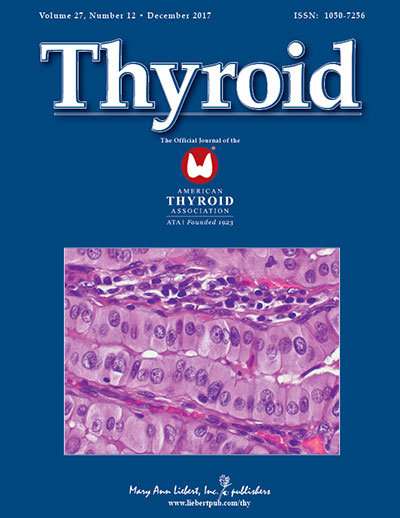Credit: Mary Ann Liebert, Inc., publishers
With a mortality rate estimated at 10%, the life-threatening condition known as thyroid storm (TS) demands rapid diagnosis and treatment and can benefit from new evidence-based guidelines for TS developed by researchers in Japan. The article entitled "Thyroid Storm: A Japanese Perspective" is part of a special section on Japanese Research led by Guest Editor Yoshiharu Murata, Nagoya University, Japan, in the January 2018 issue of Thyroid.
In the article, author Takashi Akamizu, Wakayama Medical University, Japan, presents updated diagnostic criteria, extensively revised patient management and treatment guidelines, and newly developed algorithms based on information gathered on patients with TS from hospitals throughout Japan and from the medical literature. The most common cause of death from thyroid storm was multiple organ failure, followed by congestive heart failure, respiratory failure, and arrhythmia. Also identified are as yet unanswered clinical questions and the future studies needed to better understand TS and its outcomes and prognosis.
"The definition of TS is often somewhat vague, and many reports are of an anecdotal nature. The efforts by our Japanese colleagues to better define the diagnostic criteria and management recommendations are, therefore, highly welcome," says Peter A. Kopp, MD, Editor-in-Chief of Thyroid and Professor of Medicine, Division of Endocrinology, Metabolism, and Molecular Medicine, Northwestern University Feinberg School of Medicine, Chicago, IL. "The proposed framework will serve as a solid foundation for future research and reflection about this challenging clinical entity."
More information: Takashi Akamizu, Thyroid Storm: A Japanese Perspective, Thyroid (2017). DOI: 10.1089/thy.2017.0243
Provided by Mary Ann Liebert, Inc
























